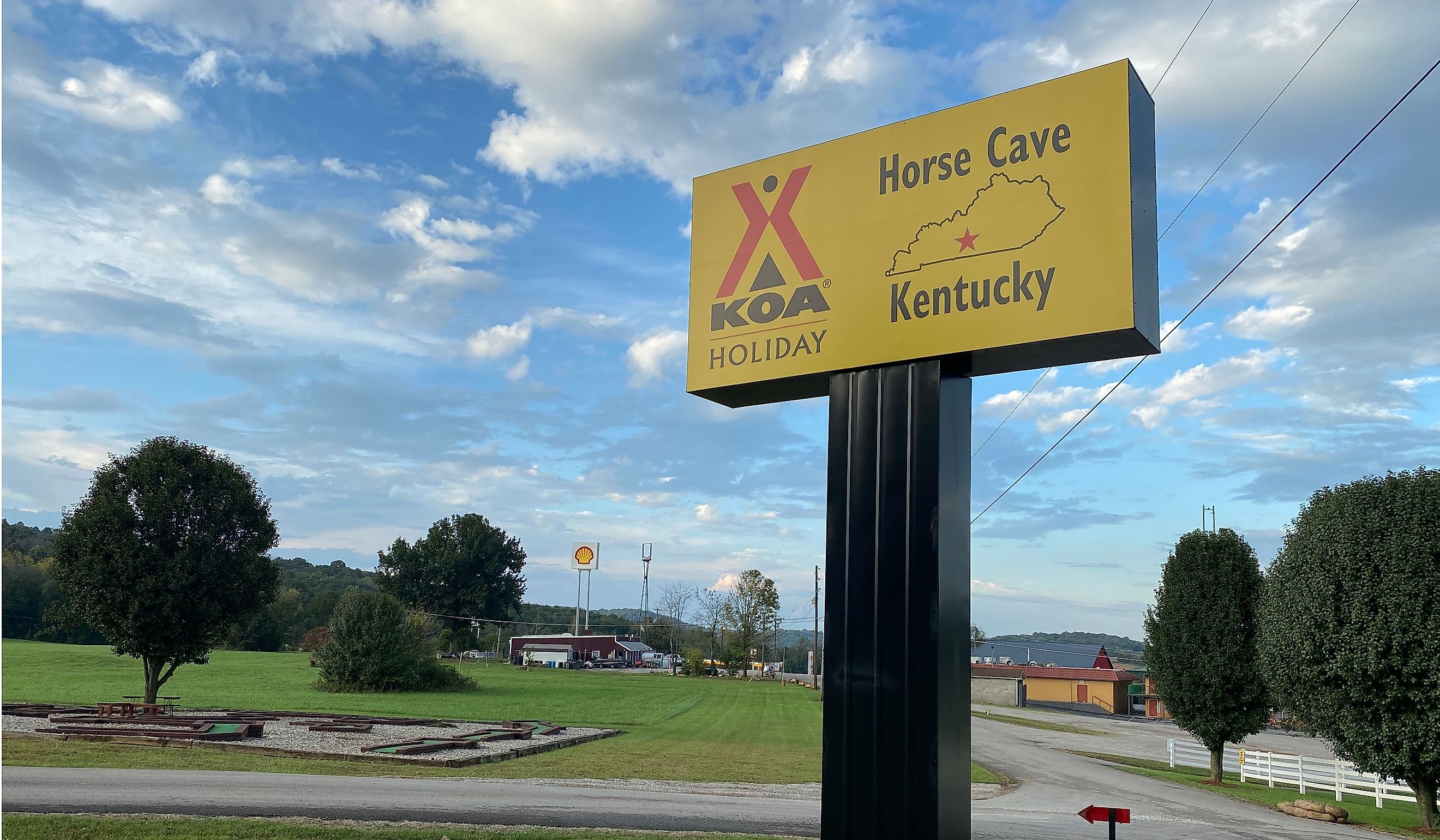
8 Bizarrely Named Towns In Kentucky
Some towns have such bizarre names that you just want to know why. Once you know, you want to go there and see if the town is as quirky as its name. Quirky or not, Kentucky has quite a few towns with out-of-this-world names. Some of the names have good reasons for their moniker, while others remain mysterious. Residents often debate the why behind their town's name. See what you think about these oddly named towns.
Barbourmeade
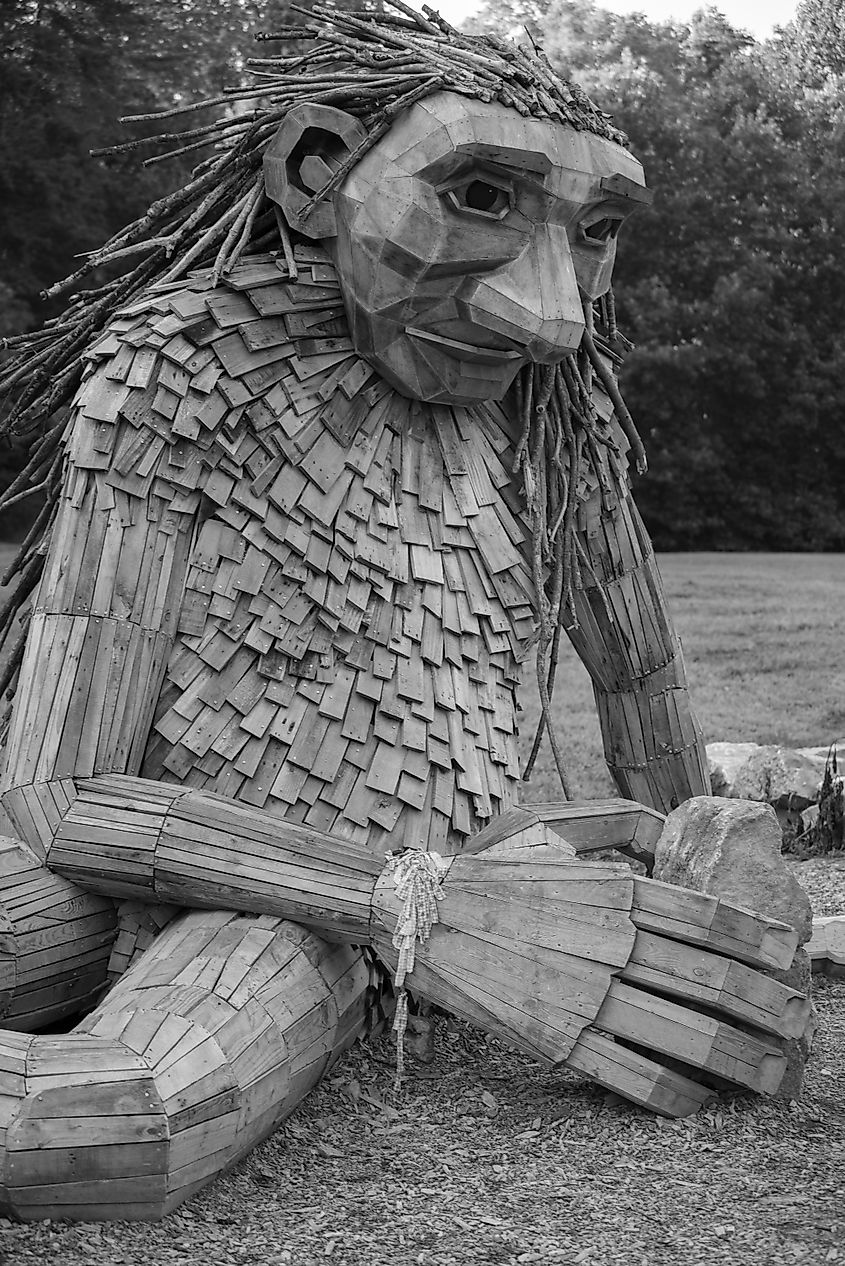
While Meade is an unusual suffix for a town, it actually means "meadow," probably referring to the town's open green space. The town is named after prominent citizens Richard and Thomas Barbour. It's interesting that another town, Barbourville, is named for James Barbour. It is uncertain whether they were related.
Try Martini Italian Bistro for good food and service. Bernheim Forest and Arboretum in nearby Clermont is worth seeing for its carved statues of woodland beings, like Little Elina Forest Giant, and the Sensory Garden, which all will enjoy but is especially geared toward people with sight impairment or who are on the Autism Spectrum. With Louisville just 15 minutes away, it is easy to take advantage of the many activities and food the city offers.
Paducah
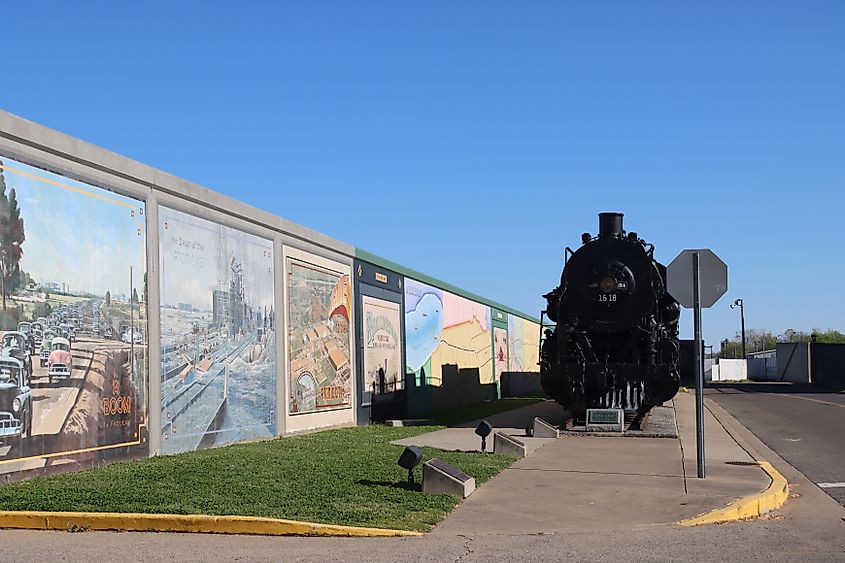
Originally known as Pekin, the town was settled around 1815. Its inhabitants were Native Americans and Eurpeans who lived together harmoniously. William Clark, the brother of George Rogers Clark (half of the Lewis and Clark explorer duo) was Superintendant of Indian Affairs for the region. In 1827, he received title to the land and named it after the Native American tribe, the Paducas.
The National Quilt Museum showcases works by contemporary quilters from around the world. Learn more of the town's history at the William Clark Market House Museum, which includes a recreated 19th century drug store. Dine at Max's Brick Oven or Grill 211. Be sure to take in the murals on the floodwall and throughout the downtown.
Fleming-Neon
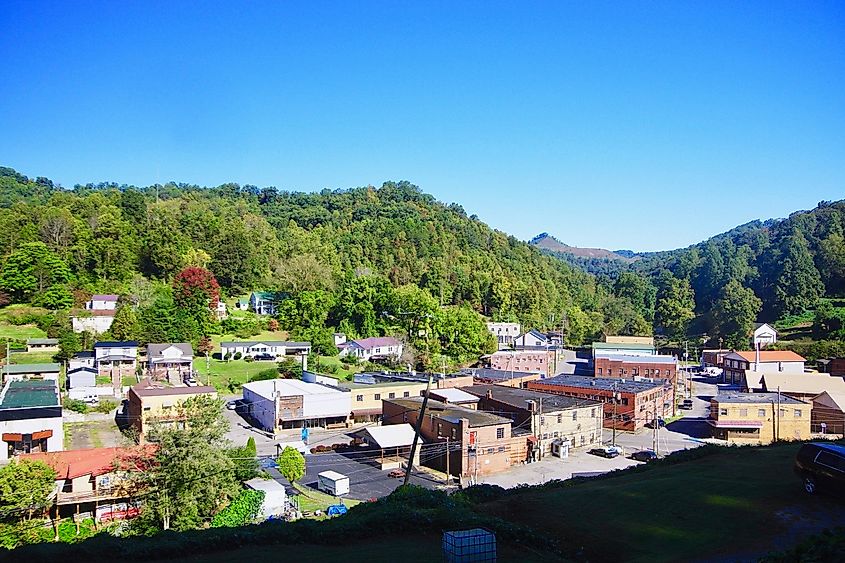
Fleming and Neon were originally separate towns. When Elkhorn Coal Company opened in 1913, they named the town Fleming after George Fleming, one of their executives.
The town of Neon was also established in 1913. Although the reason for its name is not confirmed, some say the conductor of the train that stopped there to pick up coal was heard to yell "KNEE-ON" because any passengers boarding the train would be instructed to place a knee on a stump and climb aboard. Others think it was named Neon because a merchant bought a neon sign early on, but the timing just doesn't seem right for that.
In any case, the two towns merged to become Fleming-Neon in 1977, but it is commonly referred to as just Neon. Visit the David A. Zegeer Coal-Railroad Museum in nearby Jenkins. Martins Fork Lake is a 1.5-hour drive away and well worth it for its great hiking and gorgeous white sand beach.
Hazard
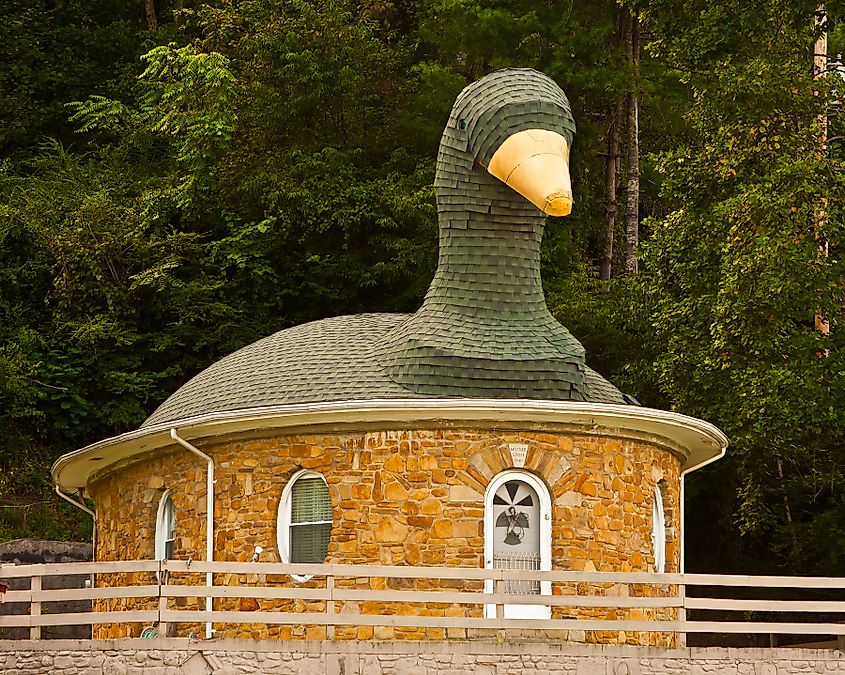
When a town's name is a synonym for danger or peril, one wonders what must have happened there to earn such a name. Research shows, however, that the town was actually named in honor of Commodore Oliver Hazard Perry, who was a naval hero in the War of 1812.
On September 10, 1813, Perry and his fleet attacked the British fleet and gained control over Lake Erie, which prevented the British from invading Ohio and Pennsylvania via Canada. Perry is famous for saying, "We have met the enemy, and they are ours."
Visit Bobby Davis Museum and Park to see what life was like in Hazard and Perry County years ago and honor locals who gave their lives in WWII. The Mother Goose House is a must-see, as well! George Stacy built the house between 1935 and 1940, using a goose skeleton as his guide. The roof is a goose body, neck, and head, and its windows are egg-shaped. And, families can "fly" a space mission at the Challenger Learning Center located right in Hazard.
Salt Lick
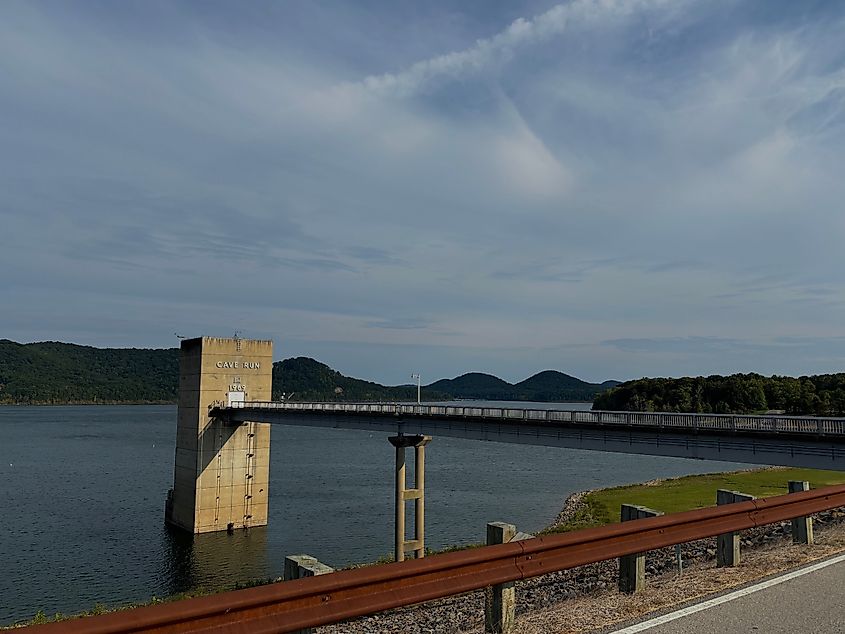
Here's a case where a town's bizarre name really makes sense once you understand it. When water bubbles up from salt springs beneath the ground this attracts wild animals that are thirsty and appreciate the water's salty taste. These areas came to be called "licks" for this reason. Salt Lick is just a more specific name.
So, what do you suppose is the story behind the name Big Bone Lick State Park in Union, Kentucky? Apparently, very long ago, some very large animals, e.g., mammoths, licked the water and mud in this area, as their very big fossilized bones were found. Visitors to the park can reflect on this history while viewing the park's modern day bison herd.
Hike the trails in the Daniel Boone National Forest and fish in Cave Run Lake. Stay at Journey's End Lodge near the lake, where fishing, golfing, and horseback riding are within walking distance. Salt Lick is about 136 miles from Cincinnati, which takes a little over two hours to drive.
Horse Cave
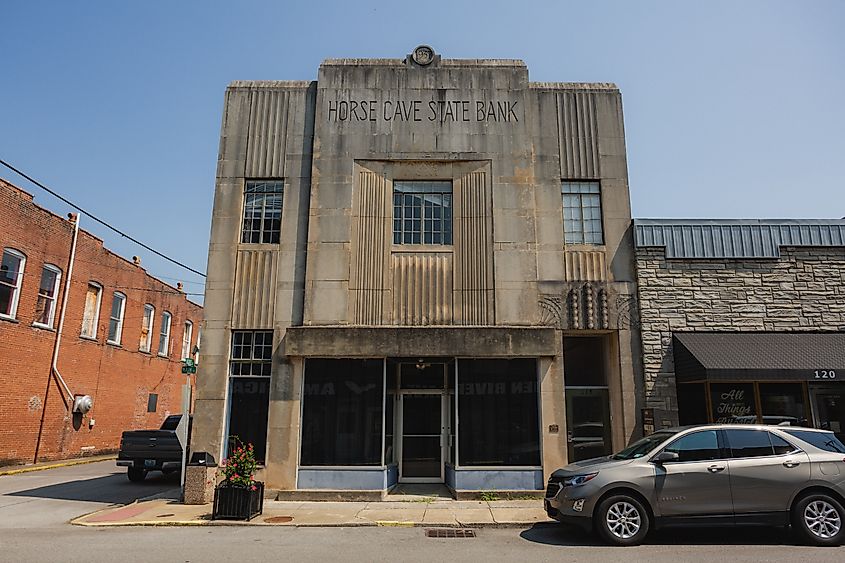
This town was named after the three-story sinkhole underneath the town. Locals initially called the hole Horse Cave, but the reason for the name is unclear. Some speculate that the hole was so deep that Native Americans hid their horses in it. It is doubtful, however, that they would put their horses in a spot so deep. Another more plausible idea is that back in those days, "horse" was used as slang to mean "big." Later, after a river was discovered in the sinkhole, people began calling the hole Hidden River Cave. The name of the town, however, remained Horse Cave.
Tours of Hidden River Cave take about an hour. Learn about its amazing history of pollution through the years that has killed all cave life to now, having water that is near drinking water quality thanks to volunteers, scientists, and the American Cave Conservation Association. Visitors can also zipline or rappel in the cave or take an off-trail cave adventure. Horse Cave is also home to the Kentucky Down Under Adventure Zoo, which features Australian wildlife. It is about a one-hour, 15-minute drive from Horse Cave to Louisville, a distance of 81.4 miles.
Pewee Valley
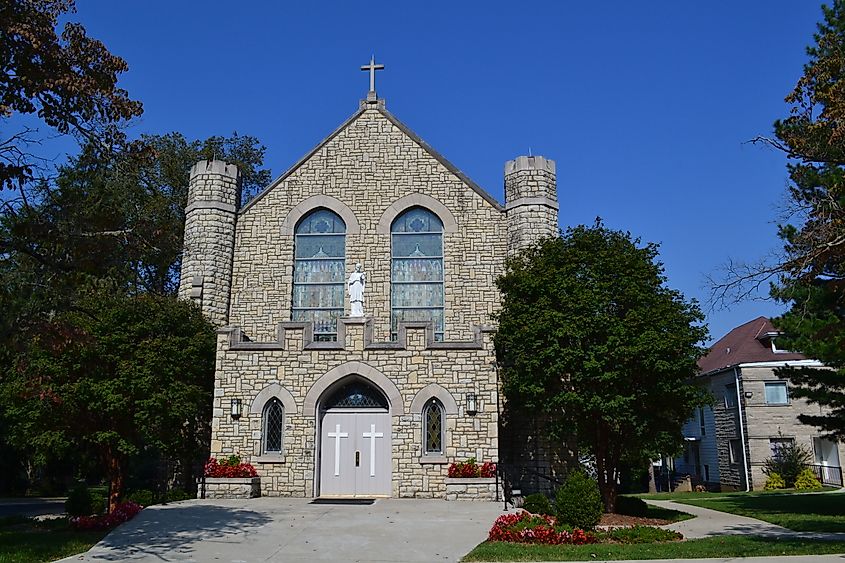
This small, quiet town is named after the Eastern wood pewee, a tiny, olive-brown bird whose call sounds like "pee-a-weeee!" Walk through the town's Central Park and view the native plantings, butterfly garden, rain gardens, wetlands, and koi pond; as well as Briar Hill Park with its historic barn reminiscent of its roots as a prominent area dairy farm.
See Yew Dell Botanical Gardens in the neighboring town of Crestwood, plus Maples Park with its playground and sprayground. Hungry? Check out Jucy's Smokehouse BBQ with its rustic atmosphere, Papi's Mex for authentic Mexican food, and Wilder's Cafe, which has locally sourced ingredients. Pewee Valley is 15 miles from Louisville and 56 miles from Lexington, which are easy drives to big city entertainment.
Pippa Passes
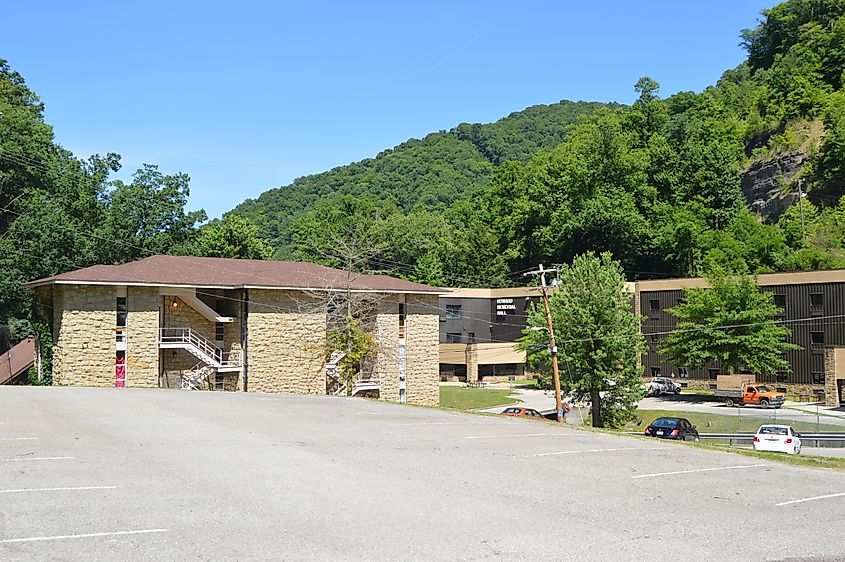
Originally named Caney Creek, a donation from the Browning Society resulted in the town being renamed after a Robert Browning poem. By the way, though, the poem is not about someone dying; rather, Pippa is walking down the street and passes by.
Look into Alice Lloyd College in Pippa Passes, which is known for its low tuition and high-quality education. Visit the Loretta Lynn Homestead, where Loretta and her sister Crystal Gale grew up, less than an hour's drive away in Van Lear. Check out the Daniel Boone National Forest, which has almost 600 miles of trails and is about two hours west. Pippa Passes is about two hours from Ashland, KY, and two-and-a-half hours to Lexington.
These are just a few of the bizarrely named towns in Kentucky. Each is worth checking out in spite of, or because of, their odd names. What's in a name? Often, a great story is behind these crazy names or, perhaps, a believe-it-or-not legend. But in every case, town founders saw something in the location and decided to settle there. Many towns' names changed through the years because of a natural landmark or a person's influence. All of them are ready to welcome your visit.











